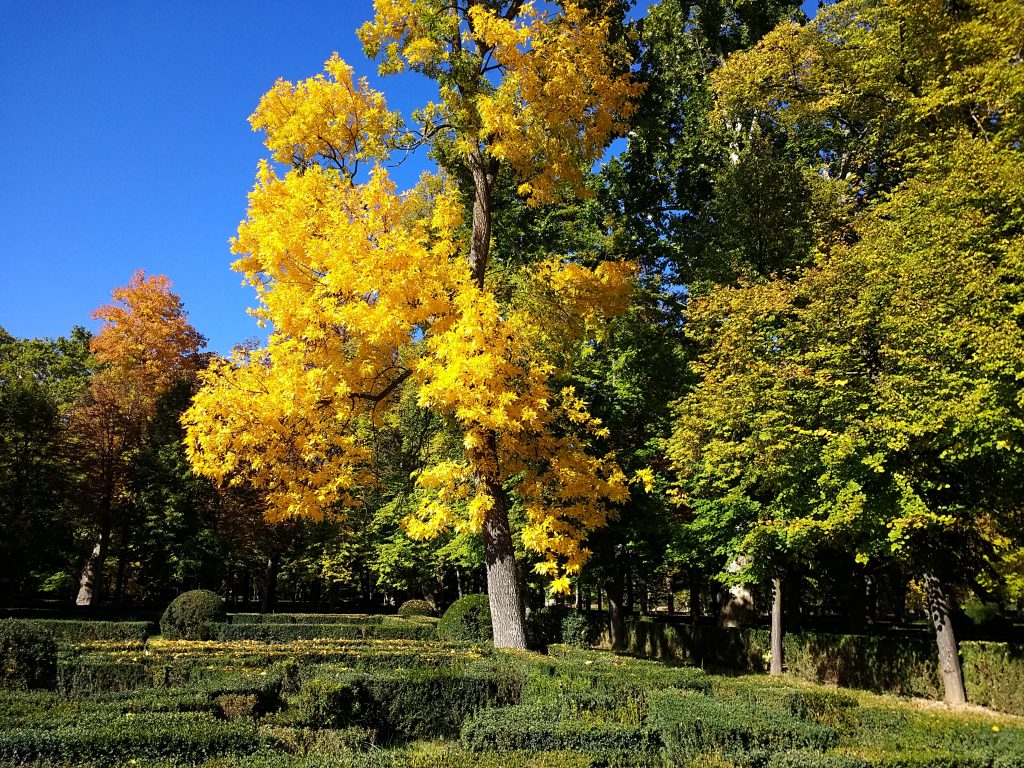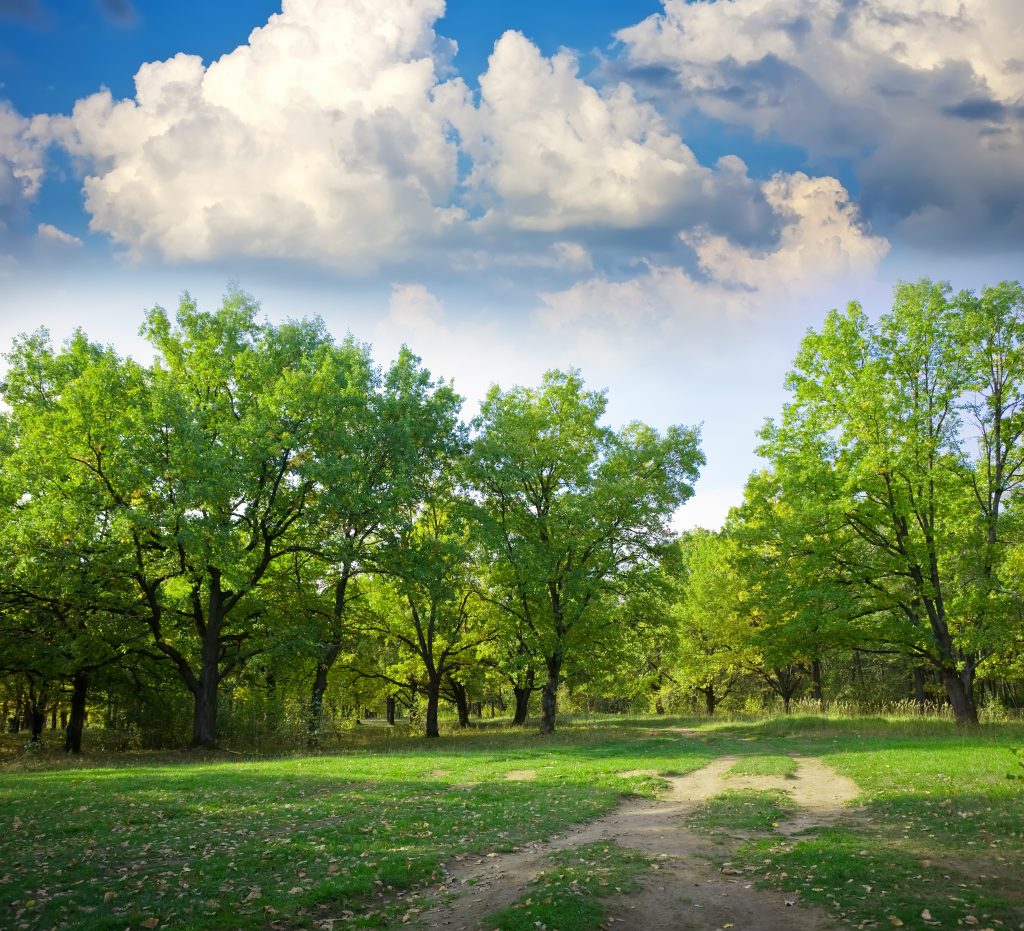Healthy trees play a vital role in maintaining ecosystem balance, enhancing aesthetics, and promoting environmental health. Their contributions extend far beyond their immediate appearance, influencing various aspects of both natural and human-inhabited environments. Here’s an exploration of the importance of healthy trees in these contexts:

Ecosystem Balance
- Biodiversity Support: Trees provide habitats, food, and shelter for a wide range of organisms, from insects and birds to mammals and fungi. Healthy trees contribute to diverse ecosystems and support biodiversity.
- Carbon Sequestration: Trees absorb carbon dioxide from the atmosphere during photosynthesis, helping to mitigate climate change by sequestering carbon and reducing greenhouse gas concentrations.
- Oxygen Production: Through photosynthesis, trees release oxygen, a fundamental element for supporting human and animal life.
- Nutrient Cycling: Fallen leaves and other organic matter from trees contribute to nutrient cycling in ecosystems, enriching soil and supporting the growth of other plants.
- Erosion Control: Tree roots stabilize soil, preventing erosion and landslides. They also intercept rainfall, reducing the impact of water on the soil surface.
Aesthetics and Quality of Life
- Scenic Beauty: Trees enhance the visual appeal of landscapes, creating visually pleasing environments that improve the overall aesthetics of urban, rural, and natural areas.
- Green Spaces: Trees in parks, gardens, and urban areas offer shaded and comfortable spaces for recreation, relaxation, and social interactions.
- Psychological Benefits: Exposure to trees and nature has been linked to reduced stress, improved mental well-being, and enhanced cognitive functioning.
- Sense of Place: Iconic trees and forests are often symbols of identity and cultural significance, contributing to a sense of place and community.
Environmental Health
- Air Quality Improvement: Trees act as natural air filters, absorbing pollutants such as nitrogen dioxide, sulfur dioxide, and particulate matter. They help improve air quality and reduce the negative health impacts of poor air.
- Temperature Regulation: Through shade and transpiration, trees help cool urban areas and combat the urban heat island effect, reducing energy consumption and improving comfort.
- Water Management: Tree canopies intercept and slow down rainfall, reducing the risk of flooding and helping water infiltrate into the ground. Tree roots also help stabilize riverbanks and prevent erosion.
- Wildlife Habitat: Trees offer habitats for birds, insects, mammals, and other wildlife, supporting diverse ecosystems and contributing to overall ecological health.
- Pollinator Support: Many trees provide nectar and pollen for pollinators, contributing to the health of pollinator populations essential for crop production and ecosystem functioning.
The importance of healthy trees transcends aesthetics and extends to ecosystem stability, environmental health, and overall quality of life. Their multifaceted contributions highlight the interconnectedness of natural systems and human well-being. Preserving and maintaining healthy trees is not only an ecological imperative but also a pathway to a more sustainable and harmonious relationship between humans and nature.
Tree Diseases And Their Impact On Tree Health
Tree diseases are pathological conditions caused by various agents, such as fungi, bacteria, viruses, and environmental stressors that adversely affect the health and vitality of trees. Just like humans and animals, trees are susceptible to diseases that can lead to a range of symptoms and consequences. These diseases can impact various parts of a tree, including its leaves, stems, roots, and even its overall structural integrity. Here’s an explanation of tree diseases and their impact on tree health:

Types of Tree Diseases
- Fungal Diseases: Fungi are common pathogens that cause a wide range of tree diseases, such as anthracnose, powdery mildew, and Dutch elm disease.
- Bacterial Diseases: Bacteria can cause diseases like fire blight in fruit trees and bacterial leaf scorch in a variety of tree species.
- Viral Diseases: Viruses can infect trees, causing symptoms such as leaf mottling, yellowing, and stunted growth.
- Environmental Stress-Related Diseases: Factors like poor soil conditions, inadequate water, air pollution, and extreme weather can weaken trees, making them more susceptible to diseases.
- Insect-Transmitted Diseases: Some tree diseases are vectored by insects, such as the emerald ash borer spreading Dutch elm disease.
Impact on Tree Health
- Leaf Symptoms: Diseases often manifest as symptoms on leaves, such as spots, lesions, discoloration, wilting, and defoliation. These symptoms can reduce a tree’s photosynthetic capacity, weakening it over time.
- Reduced Growth and Vigor: Diseased trees may exhibit stunted growth, decreased leaf size, and overall poor vigor. These trees might struggle to compete with healthier trees for sunlight, water, and nutrients.
- Dieback and Branch Mortality: Advanced diseases can lead to dieback, where branches or entire sections of the tree die. This can compromise the structural integrity of the tree.
- Root Decay: Below-ground diseases can lead to root decay and loss of root function, resulting in poor water and nutrient uptake. This weakens the tree’s overall health and stability.
- Susceptibility to Secondary Pests: Diseased trees are often more vulnerable to attack by insects and other pests. This can exacerbate the health decline of the tree.
- Tree Mortality: If left untreated, severe diseases can lead to tree mortality, impacting the ecosystem, aesthetic value, and ecosystem services provided by the tree.
Ways Diseases Spread
- Direct Contact: Close proximity between infected and healthy trees can lead to the spread of diseases through physical contact or root grafts.
- Insects and Animals: Insects, birds, and animals can carry disease-causing agents from tree to tree as they feed or move.
- Airborne Spores: Fungal spores and other microscopic disease agents can be carried by the wind to infect neighboring trees.
- Soil Contamination: Soil-borne pathogens can infect trees through root systems, especially in cases of poor drainage or soil compaction.
Management and Prevention
- Regular Inspection: Early detection through regular tree inspections is crucial for effective disease management.
- Cultural Practices: Implementing proper planting, watering, and pruning techniques can reduce stress and susceptibility to diseases.
- Integrated Pest Management (IPM): Combining multiple strategies, such as biological controls and chemical treatments, can effectively manage tree diseases.
- Planting Resistant Species: Selecting tree species that are resistant to prevalent diseases in the area can be a preventive measure.
- Pruning and Sanitation: Removing and disposing of infected plant parts can prevent the spread of diseases.
Tree diseases pose significant threats to tree health, growth, and longevity. Early detection, proper management practices, and a proactive approach to prevention are essential to maintaining the health of trees and preserving their ecological, aesthetic, and functional value in various landscapes.
Preventative Measures
Preventative measures are proactive strategies employed to minimize the occurrence and spread of tree diseases. By focusing on the health and resilience of trees, these measures aim to create an environment that is less conducive to disease development. Vividly explained, preventative measures encompass a range of practices and considerations that collectively contribute to the overall well-being of trees and the reduction of disease risks:
Site Selection and Tree Diversity
- Vivid Description: Imagine a landscape where various tree species are carefully selected based on their compatibility with the local climate, soil conditions, and disease resistance. Trees are strategically placed to create a harmonious ecosystem that supports each species’ unique needs.
- Impact: By choosing trees that thrive in their specific environment, the likelihood of disease susceptibility is reduced, leading to healthier and more resilient trees.
Proper Planting and Care
- Vivid Description: Visualize tree plantings where each sapling is carefully positioned in a hole that accommodates its root structure. The soil is enriched with nutrients, and proper mulching helps retain moisture while protecting the roots from temperature extremes.
- Impact: Trees establish strong root systems, ensuring their vitality and ability to resist diseases. Regular watering and maintenance practices promote optimal growth.
Pruning and Sanitation
- Vivid Description: Envision trained arborists inspecting trees, removing dead or diseased branches with precision. Fallen leaves and debris are promptly cleared away, preventing the accumulation of disease-causing agents.
- Impact: Pruning and sanitation create a clean and healthy environment that minimizes the spread of diseases and fosters good tree hygiene.
Soil Management
- Vivid Description: Picture soil that has been carefully evaluated and improved to provide adequate drainage, aeration, and nutrient availability. Imagine a network of tree roots thriving in soil that supports their growth.
- Impact: Proper soil management optimizes root health, ensuring trees can access essential nutrients and water, thereby bolstering their resistance to diseases.
Integrated Pest Management (IPM)
- Vivid Description: Visualize an ecosystem where beneficial insects and predators coexist with trees, naturally regulating pest populations. Natural predators keep pest numbers in check, reducing the need for chemical interventions.
- Impact: By promoting a balanced ecosystem, IPM minimizes pest-related stress on trees, making them less vulnerable to diseases.
Early Detection and Monitoring
- Vivid Description: Imagine tree professionals and enthusiasts regularly inspecting leaves, stems, and roots for subtle signs of disease. Detailed records are kept, documenting changes in tree health over time.
- Impact: Early detection allows for timely intervention, preventing disease escalation and mitigating potential damage to the tree’s overall health.
Resistance Selection and Research
- Vivid Description: Envision researchers and breeders working diligently to identify and cultivate tree varieties that exhibit natural resistance to prevalent diseases. These resistant species thrive in various environments, offering a robust defense against diseases.
- Impact: Planting disease-resistant tree species decreases the likelihood of infection, reducing the need for extensive disease management efforts.
In conclusion, preventative measures form a comprehensive approach to safeguarding tree health and minimizing the risk of disease outbreaks. These measures involve a combination of thoughtful planning, careful management, and ongoing monitoring, resulting in resilient trees that contribute to the overall health and beauty of landscapes. Just as a foundation supports a building, preventative measures provide the groundwork for thriving trees in diverse environments.
If you need a tree service in Utah, you can call:
Truco Services, Inc.
4640 Commerce Drive
Murray, Utah 84107
(801) 466–8044
https://truetreeservices.com/

